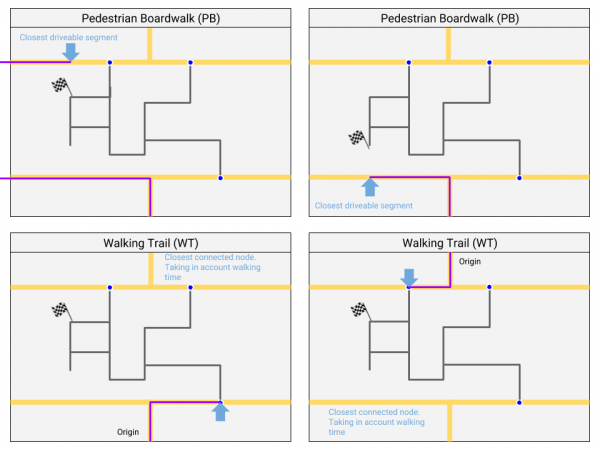mNo edit summary |
mNo edit summary |
||
| Line 13: | Line 13: | ||
'''Destination'''<br /> | '''Destination'''<br /> | ||
If a footpath leads from a normal road to a Walking Trail, but this path has no destinations / [[house numbers]], | If a footpath leads from a normal road to a Walking Trail, but this path has no destinations / [[house numbers]], | ||
should it be defined as PB or is a PB skipped in the routing and should we take WT without house numbers? | should it be defined as PB or is a PB skipped in the routing and should we take WT without house numbers?<br /> | ||
Best use a WT, see picture below.<br /> | |||
Best use a WT | |||
<br /> | |||
[[File:Routing-non-drivable.png|600px]] | |||
<br /> | <br /> | ||
<br /> | <br /> | ||
'''Public transport'''<br /> | '''Public transport'''<br /> | ||
Revision as of 00:19, 23 March 2018
Non-drivable roads
The non-drivable road types are:
Walking Trail or Pedestrian Boardwalk
Destination
If a footpath leads from a normal road to a Walking Trail, but this path has no destinations / house numbers,
should it be defined as PB or is a PB skipped in the routing and should we take WT without house numbers?
Best use a WT, see picture below.

Public transport
The previous standard "Use Walking trails for public transport" is changed into "use Non-drivable roads for public transport". because both non-drivable roadtypes have now a fix. Preference for PB because public transport lanes shouldn’t have (by accident) destinations.
